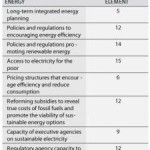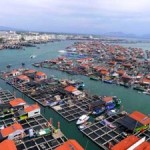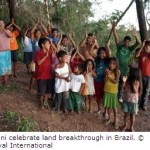 Manaus, Amazonas / Washington, D.C. – A new methodology for quantifying emission reductions from projects that reduce unplanned deforestation could help unlock carbon market revenues for countries and poor communities across Africa, Asia and Latin America, boosting the conservation of forests and creating new livelihoods.
Manaus, Amazonas / Washington, D.C. – A new methodology for quantifying emission reductions from projects that reduce unplanned deforestation could help unlock carbon market revenues for countries and poor communities across Africa, Asia and Latin America, boosting the conservation of forests and creating new livelihoods.
Deforestation and forest degradation account for approximately 12 percent of global greenhouse gas emissions – roughly equivalent to the entire global transportation sector. This is mainly due to the expansion of agriculture, conversion of forests to pastureland, the development of infrastructure, logging and wildfires. So, focusing efforts on preventing deforestation is crucial.
The new methodology – officially approved on July 14 by the Verified Carbon Standard (VCS) Association – allows projects in the voluntary market to calculate avoided emissions by reducing deforestation either on the edge (“frontier”) of large cleared areas, like agricultural zones, or in a patchwork (“mosaic”) within standing forests.
The “Unplanned Deforestation” Methodology – which has been almost three years in the making – was developed through collaboration between the Brazilian NGO Fundação Amazonas Sustentável (FAS) and the World Bank’s BioCarbon Fund, with the technical support of Carbon Decision International (CDI), the Institute for Conservation and the Sustainable Development of Amazonas (Idesam), and with financial support from Marriott International.
A key to finalizing this was the decision to merge two methodologies that were being separately developed by the World Bank and FAS. By addressing a whole range of unplanned deforestation scenarios common across developing countries, this new methodology fills an important niche compared with other methodologies for reducing emissions from deforestation and forest degradation (REDD).
“Merging FAS’s Frontier Methodology with the World Bank’s Mosaic Methodology was crucial to enabling the development of REDD projects in the Brazilian Amazon, as well as in Africa and in Indonesia,” said Virgilio Viana, CEO of FAS. “This methodology has broken the ‘north-south’ paradigm by placing the ‘south’ as a leader in high-level discussions.”
“This methodology will finally provide a framework to reward ground-breaking activities that reduce deforestation around the world while promoting conservation of natural habitats, creating sustainable jobs and contributing to the welfare of local populations,” said Ellysar Baroudy, Manager of the World Bank’s BioCarbon Fund. “An example of the positive impact this methodology will have on poor communities is the Ankeniheny-Zahamena forestry corridor project in eastern Madagascar where an innovative financial mechanism is being set up to finance the protection of a 370,000 hectare natural reserve through the sale of carbon credits purchased by the World Bank’s BioCarbon Fund, a key factor for boosting biodiversity conservation in the area.”
According to Lucio Pedroni, CEO at CDI, this methodology is an important breakthrough for everyone working to reduce the deforestation of tropical lands because of its robust and broadly applicable approach. “Many project entities were waiting for the approval of this methodology, and at last, they will be able to finalize their documentation and register their projects under the VCS,” he said.
Executive Secretary of Idesam, Mariano Cenamo, said the collaboration has brought important benefits to the dialogue on REDD. “The approval of this methodology shows that there is a high level of scientific and technical knowledge supporting REDD projects in the voluntary carbon market,” he said.
Jeff Hayward, Climate Program Director of Rainforest Alliance, which together with the Bureau Veritas Certification (BVC), was responsible for the double validation process of the methodology, added, “This is an innovative methodology of very high quality that will enable REDD projects confronting deforestation to set credible baselines and monitor emissions reductions.”
Victor Salviati of FAS highlighted the importance for Brazil of this methodology since tropical lands in particular have suffered due to unplanned deforestation. For Gabriel Ribenboim, also of FAS, the methodology represents an important milestone in a long process that started with the Juma REDD project in 2008, and it will set an example for similar projects in the Amazon.
While the VCS currently has nine methodologies in the areas of Agriculture, Forestry and Land Use – including three related to REDD activities – this REDD methodology is more broadly applicable, opening the door to an increasing number of REDD projects for example in Africa. This is timely considering that REDD discussions are expected to be high on the agenda of the upcoming United Nations climate conference in Durban, South Africa at the end of the year.
Source: The World Bank.













